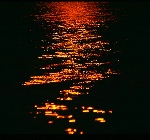Image Size
Regardless of what you have in mind (with the possible exception of printing the original image), it is usually not a good idea to use the picture as it is generated by your camera or scanner!
A state of the art digital camera produces pictures with 5-12 million pixels and a scanned image may easily have up to 40 megapixels. That is quite a lot of information and your friends or family won’t love you for sending them a mail with a couple of shots in this format!
For a web site, speed is critical. Visitors of a photo site may be prepared to wait for a few moments knowing that this is graphic-intensive, but this is measured in seconds rather than minutes.
Even nowadays, there are many people on a slow connection, so even if images load very quickly in your browser, this may be quite different for someone accessing the internet via a modem!
Even worse, if you have a website of your own and people actually do look at your photos, this may generate much more traffic than necessary - and actually cost you money, - or your host may switch off your site when you have exceeded your quota.
Fortunately, it is very easy to bring down the file size of a picture!
Size of the Photo
The first consideration is of course: how big should the photo be on screen?
most people now have a screen resolution of 1024*768 and above. There are still a few people around with 800*600 - either because they use small monitors, or because they do not see well and have set their big monitor to a lower resolution.
Also, there increasingly are other media like cell phones and set-top boxes that may use even smaller resolutions. It is up to you to decide where to draw the line.
Personally, I try to accommodate everything from 800*600 upwards without scroll bars. Now, even though the screen may be 800 pixels wide, this doesn’t mean that you can see an 800 pixel wide image without horizontal scrolling! There are browser bars and task bars etc, so it’s probably wise to deduct 150-200 pixels from your maximum.
Before you resize your photo, make sure to crop it. There often are some details that you do not want in the finished picture. By the way: I guess that, if someone steals your images, this could come in handy allowing you to prove authorship (they do not have the missing parts of the original shot, but you do).
Cropping also sometimes is a good way of improving the composition of a photo - for example by using the rule of thirds. With a high-resolution photo, you can select the most interesting part and even cut a portrait-format out of a landscape-format picture.
Actually, this sort of cropping is exactly what the “digital zooms” of modern digital cameras are doing! Chances are though that the results achieved with your favourite photo editing software will be much better with a bit of practice.
File size and Image Formats
Digital cameras as well as scanners usually offer you the option to save your pictures in a “raw” or “tif” format. These are so-called loss-free formats - so the image is not (yet) compressed. This uses lots of storage space, but gives you the best output. If you save a file as “jpg”, it will be much smaller, but you will lose some image information every time you save your picture!
Jpg still is the best format for photos on the web, for graphics, usually “gif” will give you the better results.
So, it is not advisable to do this several times.
I would strongly suggest to save your image in a loss-free format first (storage space is cheap), and only work on a copy. Save it as a jpg only when you are done.
Also, it is best to to save the optimised photo in a loss-free format: if you have to work on it again (e.g. for making it into a logo on your website), you do not need to repeat all the steps to optimise it.
When saving your picture as a jpg file, you will be able to specify a “quality”. This determines the strength of the compression used. If you use 100 %, there’ll be hardly any loss of information, but chances are your file will still be too big for the web.
Usually, 80-95 % will give you results that you can hardly distinguish from 100% and the file size will decrease dramatically. There are programs that allow you to see the results even before saving your picture.
Be careful though: most programs give you the “remaining quality” as a number, for example “95 %”. Paintshop pro gives you the quality loss! So if you want to have 95 % quality, you’d have to choose “5 %” in this software.
Most pictures can be brought down to 30-50 kb (from 7-40 megabyte!) for 600*400 pixels without any problem. Photos containing very intricate textures may need more, but 100 kb should be the absolute maximum on the web!
Prepare your photos for the web
Image Size, file size and web optimisation
Image Optimisation: Hardware Requirements
Photo Editing Software
How to correct / retouch a photo

